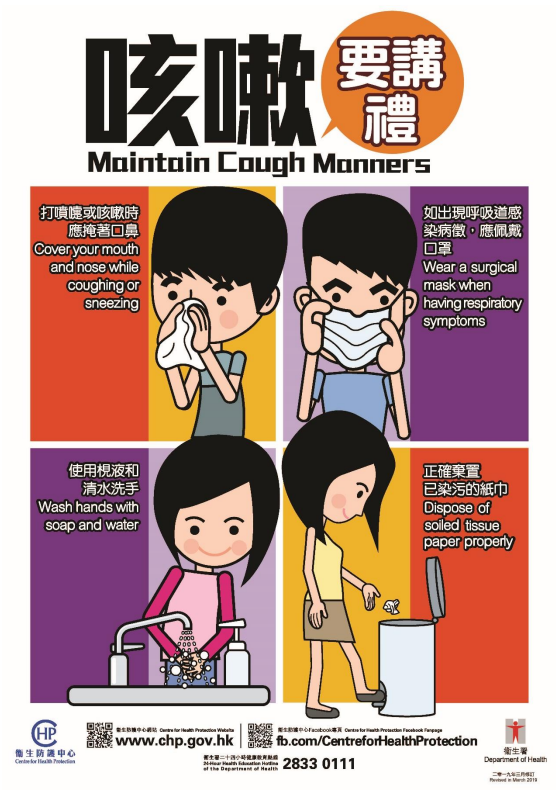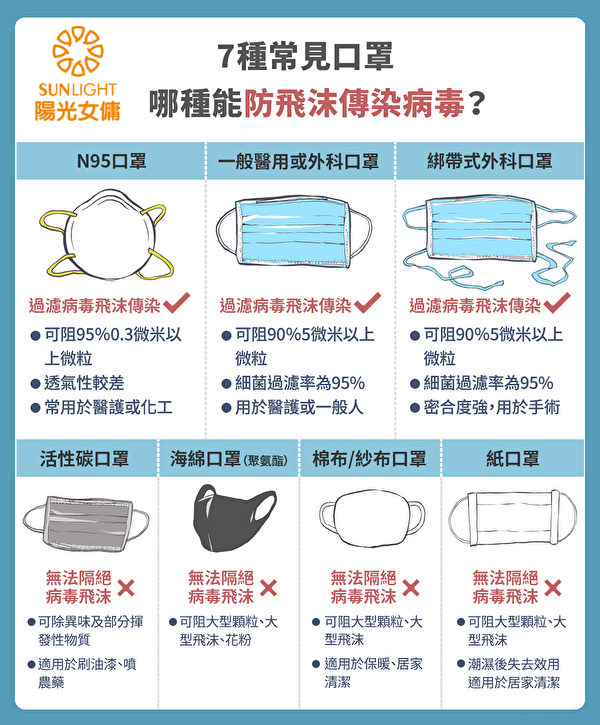The pandemic in Hong Kong has been severe for years. Wearing and purchasing masks is basically an anti-epidemic responsibility that every family must perform. Masks have the function of blocking the passage of liquids and droplets, and can be worn properly and can effectively prevent diseases transmitted by droplets.
However, employers and helpers may have been wearing, choosing and handling masks in the wrong way, which not only fails to prevent diseases, but may also have adverse effects.
According to the advice of the Department of Health, citizens should not use masks with exhalation valves or vents, as such masks cannot effectively filter exhaled droplets. If the wearer has COVID-19 or other respiratory disease, the virus will also increase the risk of infection to nearby people.
In view of this, Sunlight Employment Agency specially collects information and prepares guidelines for choosing and wearing masks, so that employers and helpers can better understand how to properly wear masks.

1. Wash your hands regularly.
2. Try not to touch the eyes, nose and mouth. If necessary, should clean hands first.
3. Follow cough etiquette and cover your mouth and nose when coughing.
4. If you have symptoms, try to stay at home to rest and avoid contact with others.
5. Reduce non-essential social activities and avoid crowded places. (If attendance is necessary, the length of stay should be as short as possible.)
6. Pregnant women and patients with chronic diseases are recommended to wear surgical masks for a long time due to their low immunity.
1. Choose the right size to fully cover the mouth, nose and chin.
2. The mask should be closed to the face so that the air cannot leak from the gap at the edge.
3. Tighten the straps that secure the mask, or wrap the elastic around the ears.
4. When wearing, press the metal strip of the mask tightly along both sides of the bridge of the nose.
5. After wearing, you should feel comfortable and do not need to adjust the position of the mask frequently.
1. Cup your hands on the mask and check the outside edges to make sure there are no gaps.
2. Check that there is no excess air leaking from the area near the eyes or from the edges of both sides of the mask.
3. Normal If you wear it correctly, you should be able to feel warm air passing through the front of the mask, and you can see the mask rise and fall with each breath.

1. Knot and arrange the rubber band of the mask at the edge of the mask, then fold the excess mask material and hide it in the edge of the mask.
(Figure 2-5)
*The above steps should be performed when the mask is not contaminated, and hands must be thoroughly cleaned before touching the mask
If the mask still does not fit the face, using an aid or adding a cloth mask to the surgical mask may help:

1. You can use mask buckles or clips to tighten the ear straps of the surgical mask at the back of the head to make the mask fit the face more closely;
2. Wear a mask frame over the surgical mask to reduce air leakage from the edge of the mask (Figure 6); or
3. Add a cloth mask to the surgical mask to reduce air leakage from the edge of the mask (Figure 7).

Sunlight Employment Agency strongly recommends that employers and helpers should follow the advice of the Department of Health to wear masks, and they also need to compare more when choosing masks.
